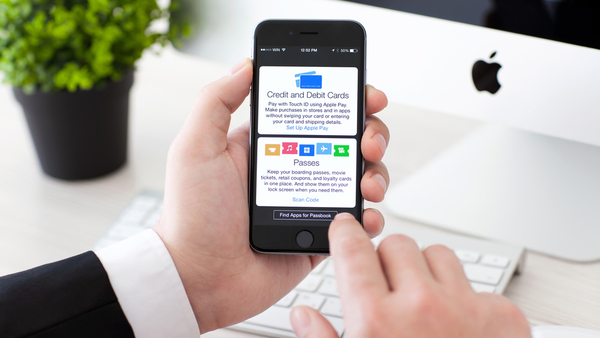
Apple announced Monday at its Worldwide Developers Conference that its new mobile operating system, iOS 11, will allow users to make person-to-person payments directly through the instant messaging feature on their iPhones, iPads and Apple Watches.
The move puts Apple head-to-head against big P2P players such as Venmo, Dwolla, Square and Early Warning’s Zelle network, which is a P2P platform owned by Bank of America, BB&T, Capital One, JPMorgan Chase, PNC Bank, U.S. Bank and Wells Fargo. Apple said it plans to roll out iOS 11 this fall.
“Apple Pay users will be able to make and receive payments with friends and family quickly, easily and securely. They can send money and get paid right in Messages, or tell Siri to pay someone, using the credit and debit cards they already have in Wallet,” the company said in a press release yesterday.
Apple has been experimenting with P2P for some time. In September 2016, it made P2P platform Circle available in iOS 10, enabling people to send and receive social and personal payments to anyone in the world without fees directly through Apple Messages — the feature many people use for texting. Customers could send dollars, euro, pound sterling and bitcoin, Circle said at the time.
One important difference between then and now appears to be the addition of the Apple Pay Cash account.
“[Apple Pay users] can use the money instantly to send to someone, make purchases using Apple Pay in stores, apps and on the web, or transfer it from Apple Pay Cash to their bank account,” the company said in an announcement yesterday.
The P2P feature and Apple Pay Cash will be available only in the United States, Apple said.
The move marks a shift away from what CSCU Director of Payments Strategy Lou Grilli calls “pass-through,” whereby money simply moves from one share draft account to another via the P2P app. Instead, Apple is also offering “stored value” — the option to keep money inside the app itself.
Apple has a huge user base — 85.8 million iPhone users alone at the end of 2016, and that’s just in the United States, according to ComScore. Despite speculation that the company’s latest move could eviscerate P2P competitors and lure deposits away from traditional share draft or other accounts, Grilli said credit unions could benefit.
Even though some customers might store money in Apple Pay Cash accounts instead of at their credit unions, many will likely attach credit and debit cards to their Apple accounts, too, he noted. Adoption could drive more card use overall, which could mean more interchange fees for card issuers.
“If a couple of people more use Apple Pay because they jumped on this Apple P2P capability, then that’s a couple of more people who are making Apple Pay transactions,” he said. “And even better, those are tokenized…which means less fraud on those transactions at the point of sale or in-app.”
Grilli said that as P2P adoption rates increase in general, it’s also conceivable that users will use two or three different P2P options regularly.
Regardless of who credit unions partner with, they likely won’t be able to monetize P2P directly — and that might be okay, Grilli added, because the bigger issue is keeping up with the times.
“You need to do that to keep your users there,” he said.
“If anything, this hopefully is a wake-up call for credit unions that you need to have your BINs enrolled in tokenization,” Grilli said. Apple recently dipped a toe into bill pay as well, rolling out an arrangement in April with Xfinity that allows customers to pay their monthly bills via Apple Pay.
But many credit unions still aren’t enrolled in Apple Pay, he said. That’s dangerous, because members who want to use Apple Pay and subsequently Apple’s P2P are going to use some other financial institution’s credit or debit card to do it, he warned.


